Ali Agha
Early Recall, Late Precision: Multi-Robot Semantic Object Mapping under Operational Constraints in Perceptually-Degraded Environments
Jun 21, 2022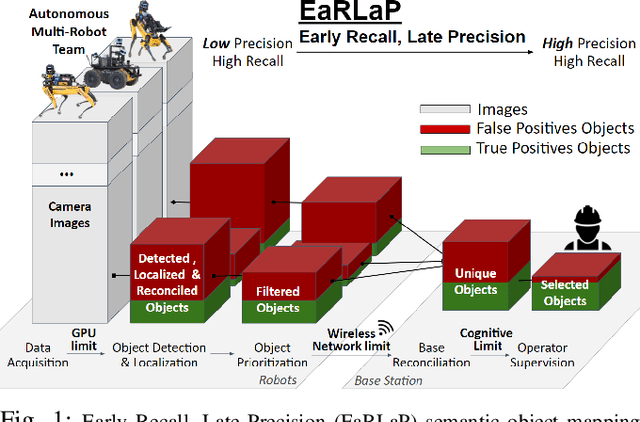
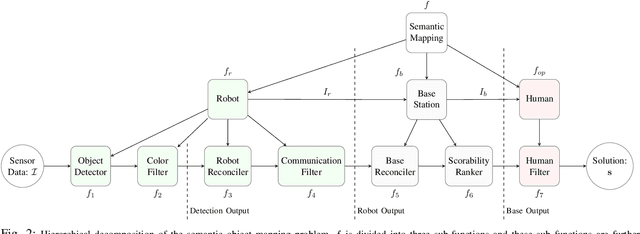
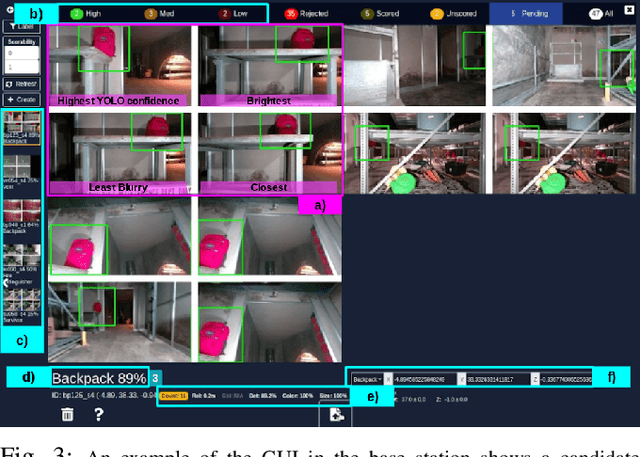
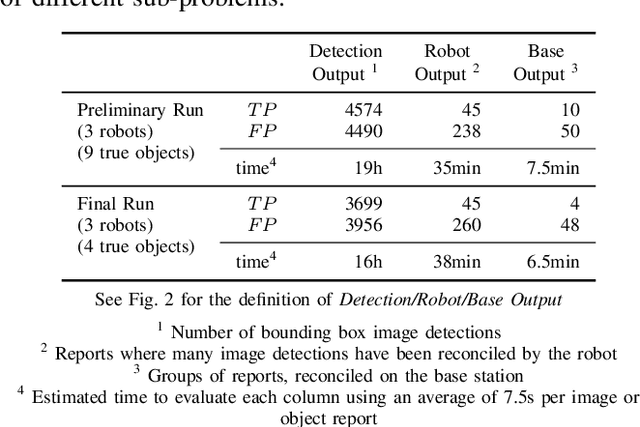
Abstract:Semantic object mapping in uncertain, perceptually degraded environments during long-range multi-robot autonomous exploration tasks such as search-and-rescue is important and challenging. During such missions, high recall is desirable to avoid missing true target objects and high precision is also critical to avoid wasting valuable operational time on false positives. Given recent advancements in visual perception algorithms, the former is largely solvable autonomously, but the latter is difficult to address without the supervision of a human operator. However, operational constraints such as mission time, computational requirements, mesh network bandwidth and so on, can make the operator's task infeasible unless properly managed. We propose the Early Recall, Late Precision (EaRLaP) semantic object mapping pipeline to solve this problem. EaRLaP was used by Team CoSTAR in DARPA Subterranean Challenge, where it successfully detected all the artifacts encountered by the team of robots. We will discuss these results and performance of the EaRLaP on various datasets.
NeBula: Quest for Robotic Autonomy in Challenging Environments; TEAM CoSTAR at the DARPA Subterranean Challenge
Mar 28, 2021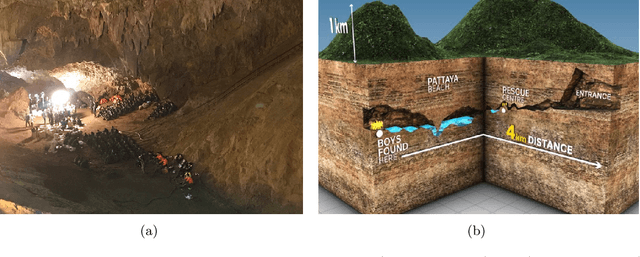
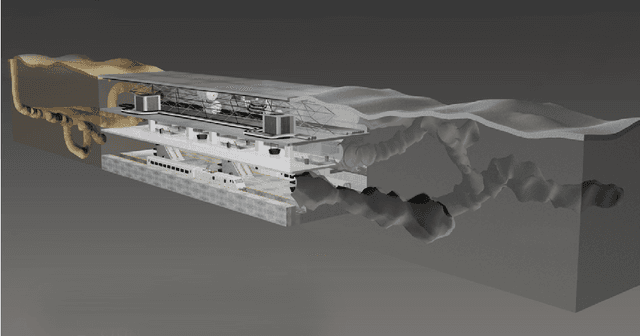
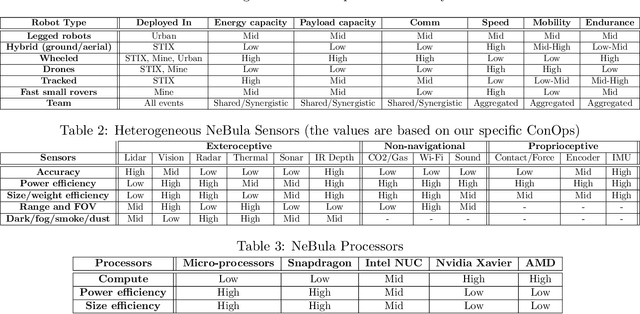
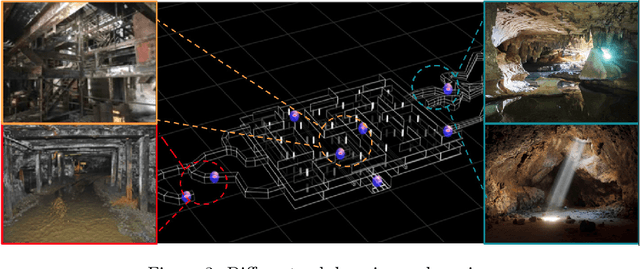
Abstract:This paper presents and discusses algorithms, hardware, and software architecture developed by the TEAM CoSTAR (Collaborative SubTerranean Autonomous Robots), competing in the DARPA Subterranean Challenge. Specifically, it presents the techniques utilized within the Tunnel (2019) and Urban (2020) competitions, where CoSTAR achieved 2nd and 1st place, respectively. We also discuss CoSTAR's demonstrations in Martian-analog surface and subsurface (lava tubes) exploration. The paper introduces our autonomy solution, referred to as NeBula (Networked Belief-aware Perceptual Autonomy). NeBula is an uncertainty-aware framework that aims at enabling resilient and modular autonomy solutions by performing reasoning and decision making in the belief space (space of probability distributions over the robot and world states). We discuss various components of the NeBula framework, including: (i) geometric and semantic environment mapping; (ii) a multi-modal positioning system; (iii) traversability analysis and local planning; (iv) global motion planning and exploration behavior; (i) risk-aware mission planning; (vi) networking and decentralized reasoning; and (vii) learning-enabled adaptation. We discuss the performance of NeBula on several robot types (e.g. wheeled, legged, flying), in various environments. We discuss the specific results and lessons learned from fielding this solution in the challenging courses of the DARPA Subterranean Challenge competition.
Smoke Sky -- Exploring New Frontiers of Unmanned Aerial Systems for Wildland Fire Science and Applications
Nov 12, 2019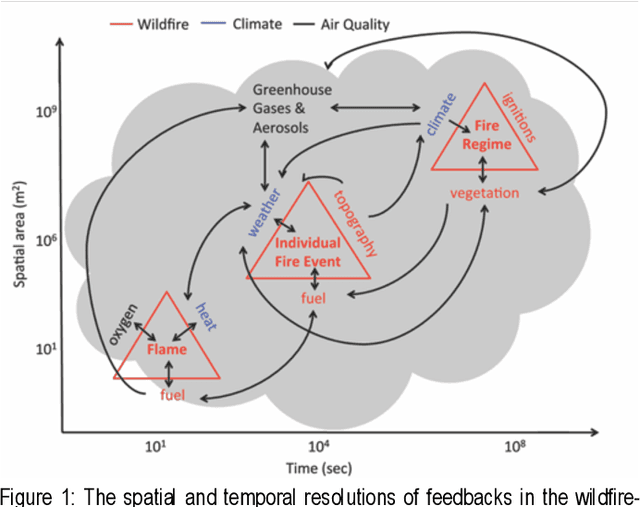

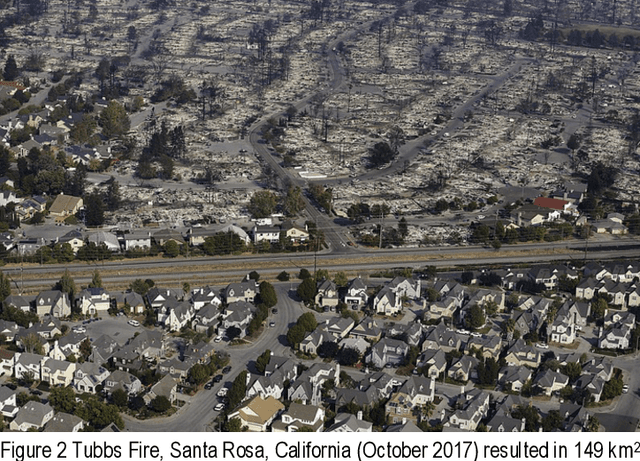
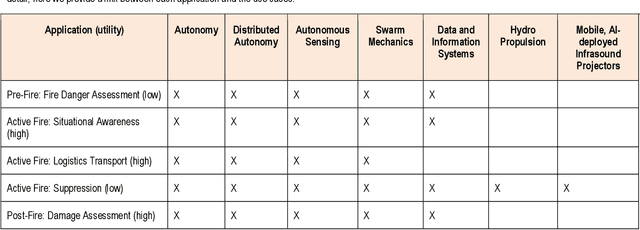
Abstract:Wildfire has had increasing impacts on society as the climate changes and the wildland urban interface grows. As such, there is a demand for innovative solutions to help manage fire. Managing wildfire can include proactive fire management such as prescribed burning within constrained areas or advancements for reactive fire management (e.g., fire suppression). Because of the growing societal impact, the JPL BlueSky program sought to assess the current state of fire management and technology and determine areas with high return on investment. To accomplish this, we met with the national interagency Unmanned Aerial System (UAS) Advisory Group (UASAG) and with leading technology transfer experts for fire science and management applications. We provide an overview of the current state as well as an analysis of the impact, maturity and feasibility of integrating different technologies that can be developed by JPL. Based on the findings, the highest return on investment technologies for fire management are first to develop single micro-aerial vehicle (MAV) autonomy, autonomous sensing over fire, and the associated data and information system for active fire local environment mapping. Once this is completed for a single MAV, expanding the work to include many in a swarm would require further investment of distributed MAV autonomy and MAV swarm mechanics, but could greatly expand the breadth of application over large fires. Important to investing in these technologies will be in developing collaborations with the key influencers and champions for using UAS technology in fire management.
 Add to Chrome
Add to Chrome Add to Firefox
Add to Firefox Add to Edge
Add to Edge